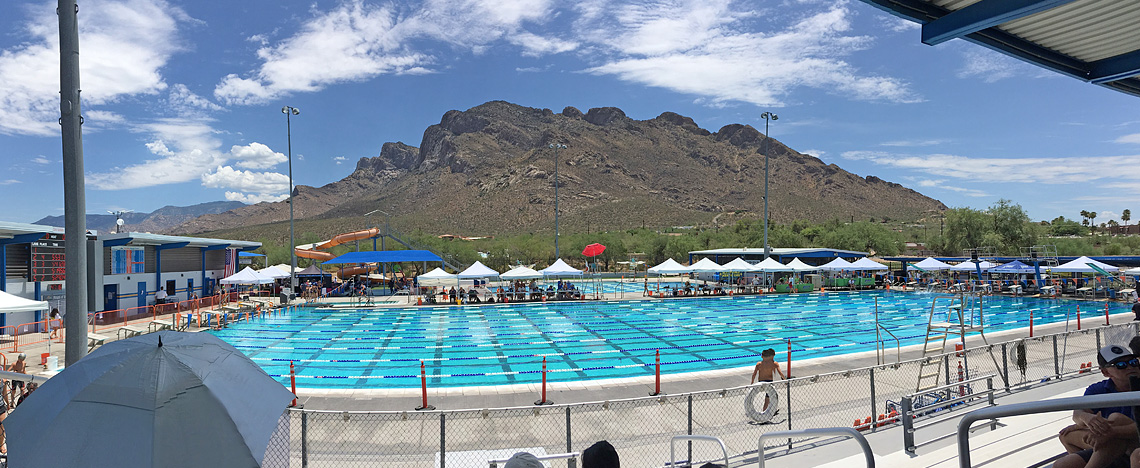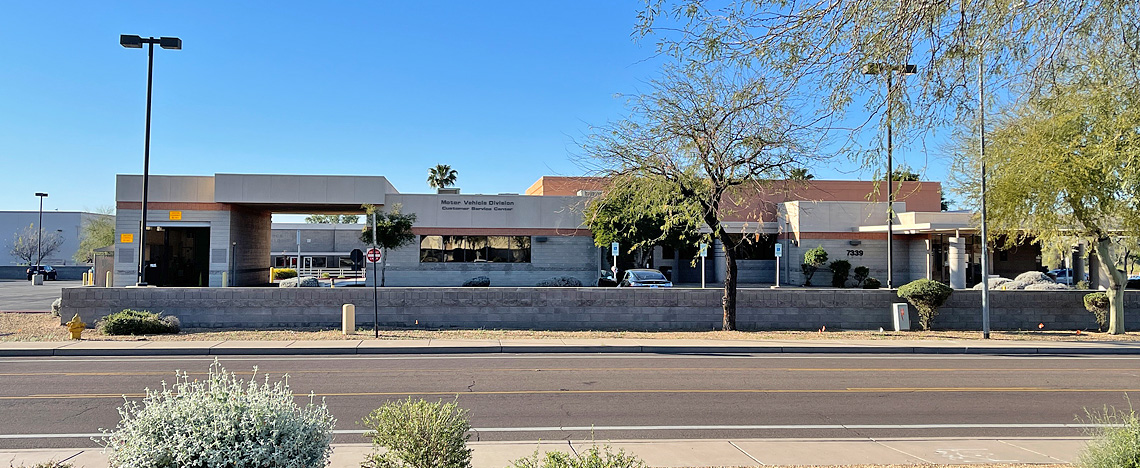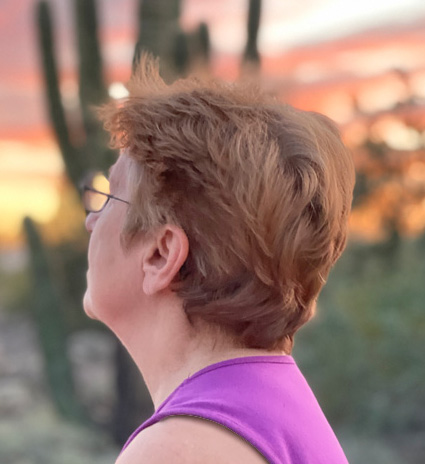
Junior Olympics Championship in Tucson
The time has come when conversations revolve around grandchildren and plants. It’s good that it’s not about ailments, although those seem to increase with age. And now, I want to boast about my grandson. From July 12 to 14, we were in Tucson for swimming competitions.
Tucson is a half-million city in southern Arizona (large by American standards). It is located 108 miles (174 km) from Phoenix and 60 miles (97 km) from the Mexican border. It was acquired from Mexico in 1854 and temporarily served as the capital of the Confederate Territory of Arizona. The first university in Arizona was founded in Tucson, and it has grown from 32 students to 45,000. The university conducts extensive research in astronomy, participates in the creation of the most modern telescope in the world, “Magellan”, which is planned to be installed in the Chilean Andes in 2021 and will be ten times more powerful than the Hubble Space Telescope.
For children under 15 years old, the Arizona Junior Olympics in Swimming took place in Tucson from July 12 to 14, and the State Championship was held from July 18 to 21. These competitions took place in a 50-meter pool. There are many swimming competitions in the USA, but in winter they are held in “short course” (i.e., the length of the lanes is 25 yards), and in the summer, starting from May, they are held in “long course.”
In the end, he received six gold medals, two silver, and two bronze medals.
For pools with different lane lengths, the swimming standards also differ. There are regional (Regional) and state (State) standards divided by age and distance/style of swimming. For the State Championship, you could apply for a distance with an accomplished state standard. By that time, Marik had only two “states” — 100 yards butterfly and 200 yards IM (individual medley), and we decided to go for the Junior Olympics.
At the Junior Olympics, you could swim no more than 9 distances. Mark managed to swim three each day, plus his coach put him in two relays. He performed very well and met the state standards (State) for the age group “ten years and younger.” In the end, he received six gold medals (including two golds for relays), two silver and two bronze medals. However, in the 100 meters breaststroke, even though he met the state standard, he only placed fifth and received a ribbon for it. Before the competition trip, we planned to do some cultural activities: visit a museum, check out the observatories, of which there are three at the university. But after a whole day sitting in 42-degree heat, we lacked the energy for any cultural events. Only one evening it rained, and we went for a walk in the part of the city where our hotel was located.
After the child met the state standards in his age group, the opportunity arose to participate in the State Championship, and the problem “to go or not to go” arose for the parents. After lengthy discussions, we decided to sign up for the competition, and within a week, we set off for Tucson again.
The competitions were held in the same pool, under the same 42-degree heat, but with a greater number of participants and preliminary qualifying heats. Over four days of competition, 106 heats needed to be conducted. The children came from all over the state and were very strong. Although only one person could register for six events, this number could increase with the inclusion of preliminary heats and relays.
In these competitions, Mark didn’t win any medals, but he improved his time in some distances. And most importantly, he met the regional standards for the next age group of 11 – 12 years. After all, he turns 11 in August and will move up to another age group, and the competition with himself for meeting different standards will begin again.
In a couple of weeks, Mark will start school. I wanted to go home right away, but tickets for the entire month of August are very expensive, so we will have to wait until mid-September.















